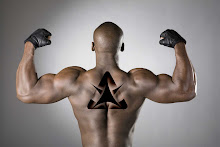An interview with 52 Blocks researcher, practitioner Daniel Marks and author Thomas A. Green
Both will participate in Luther College's Black History Conference Thursday, Feb. 25
As participants in Luther College's Black History Conference Thursday, Feb. 25, New York City-based 52 Blocks researcher and practitioner Daniel Marks and Thomas A. Green, of Texas A&M University, (editor of Martial Arts in the Modern World) are among some of the country's top scholars and practitioners of traditional African and African American martial arts. Also participating in the conference are Richard Merritt, associate professor of art, Luther College; Kawon Akhenoten, 52 practitioner; T. J. Desch-Obi, Ph.D., associate professor of African and African Diaspora History at City University of New York, Baruch College and Yogi Senna of the Minnesota Capoeria Association.
JBR: Why is it important that this fighting art -- 52 Blocks -- not disappear?
Daniel Marks: 52 is a study in cultural transmission under stress. It shows how a community living on the outside of the main or popular culture survived and what it valued. The dynamics of African American life revolved around self identity, a name in description that changed over hundreds of years -- from being called Negro to Colored, to Black, Afro American, and finally African American. During this transition we would lose and regain cultural traditions that were deemed acceptable to the mainstream. 52 is in line with our legacy of boxing in North America which dates back to the 1790s, when an unknown former slave named Bill Richmond "The Black Terror" would make a name fighting for the British Heavyweight Title against their Champ Tom Crib in 1804. Although Mr. Richmond would lose the fight, his exploits became the subject of a BBC documentary detailing his life and triumphs. So in saving 52 we in turn save the legacy of many unknown men who'd boxed and trained boxers from the 1800s to the present.
Thomas Green: The 52s ... are not only fighting methods, but unique cultural contributions, forms of folk art. Recognizing them as such allows them to be used as vehicles for self-actualization and community self-esteem. The 52s, JHR, Knocking and Kicking, Rough and Tumble (for these vernacular martial arts the list of regional variants goes on and on ...) are like blues or jazz (and share many of the same aesthetic principles). Unfortunately, the medium that the art form employs is not one that is likely to bring any invitations to appear at the Smithsonian Folklife Festival any time soon. But then again, who knows?
JBR: How would you describe the cultural significance of 52 Blocks?
Daniel Marks: Now that we have taken charge of bringing this to light, we find that many elders were relieved to unburden themselves by sharing this forgotten knowledge because no one had ever asked about it before. Yet this art of fighting can be seen in plain sight in every expression of culture from dance to music even the way we worship and play. 52 is a relative of freedom fighting arts that have survived throughout the Diaspora. Arts from the Caribbean, South America, and Southern United Stated all share a common theme -- i.e., survival and resistance. This renaissance will allow us to tell about the Buffalo Soldiers, and the Maroons of Jamaica and Haiti; the slave revolts of Brazil and Columbia. As a people we adapted to change and through this journey our expression has become world culture through sports and entertainment, and yet very little is known outside of Black Studies about these accomplishments. The lesson here is to save the content for the next generation and we hope they will see the value and merit in its character, and want to carry on the tradition of culture for the next hundred years.
Wednesday, February 24, 2010
Subscribe to:
Post Comments (Atom)



No comments:
Post a Comment